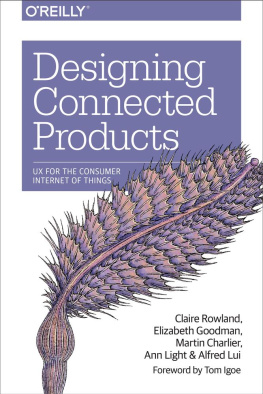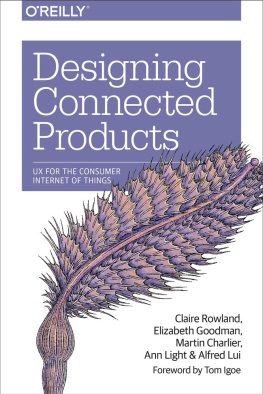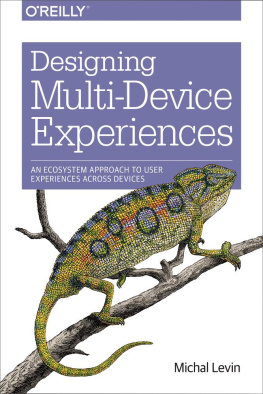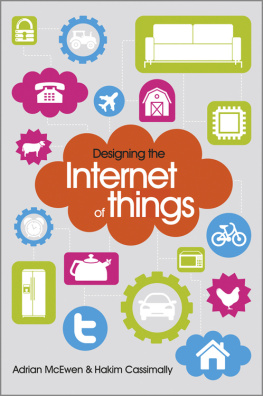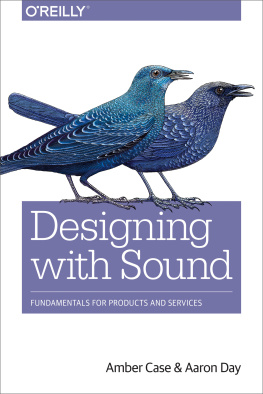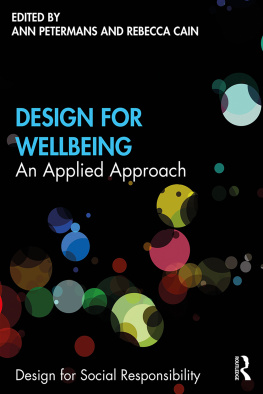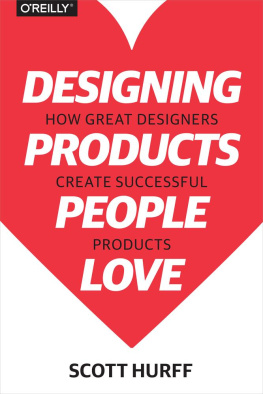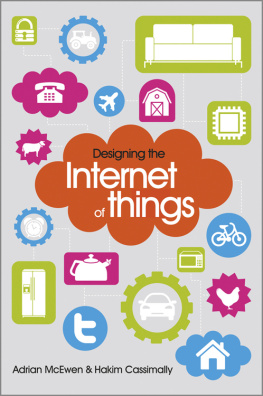Designing Connected Products: UX for the Consumer Internet of Things
Claire Rowland
Elizabeth Goodman
Martin Charlier
Ann Light
Alfred Lui
Beijing Cambridge Farnham Kln Sebastopol Tokyo
For Silas, who will never know an Internet without all the Things
Special Upgrade Offer
If you purchased this ebook directly from oreilly.com, you have the following benefits:
DRM-free ebooksuse your ebooks across devices without restrictions or limitations
Multiple formatsuse on your laptop, tablet, or phone
Lifetime access, with free updates
Dropbox syncingyour files, anywhere
If you purchased this ebook from another retailer, you can upgrade your ebook to take advantage of all these benefits for just $4.99. to access your ebook upgrade.
Please note that upgrade offers are not available from sample content.
Praise for Designing Connected Products
This is more than a UX book; it covers all of the critical design and technology issues around making great connected products.
DAVID ROSEENTREPRENEUR, MIT MEDIA LAB RESEARCHER, AND AUTHOR OF ENCHANTED OBJECTS
Whether youre an IoT pro or just getting started designing connected products, this comprehensive book has something for everyone, from examinations of different network protocols all the way up to value propositions and considerations for hardware, software, and services. This book takes a clear-eyed look at IoT from all angles.
DAN SAFFERAUTHOR OF MICROINTERACTIONS
This book should be on the desk of anyone contemplating an IoT product. Covering the end-to-end ecosystem of devices through to backend services, the authors address so many aspects of the UX journey that constantly make you think: Oh, yes, really good point! There is comprehensive coverage of the technology options available as building blocks and patterns for an IoT solution. The book skillfully delivers a wealth of sound UX wisdom, backed up by of-the-moment examples, which will resonate with practitioners already familiar with the IoT world, and will serve as a modern educational text for everyone.
DR. ANDY STANFORD-CLARKIBM DISTINGUISHED ENGINEER FOR INTERNET OF THINGS
The authors do a fantastic job of not only exposing the complexities of a future pervaded by connected things, but suggesting exactly how we can consciously go about preventing that complexity from overwhelming us. This book will be an essential reference for designers as they come to grips with creating these new type of things that will live throughout our lives.
BEN FULLERTONCREATIVE DIRECTOR, SONOS
The explosion of possibilities with the Internet of Things will only come about if people can understand and use it. Designing Connected Products brings much needed clarity to the challenge and provides a toolkit to build better solutions. It also acts as a showcase of the brightest and best Internet of Things projects and products.
ADRIAN MCEWENFOUNDER, MCQN LTD., AND AUTHOR OF DESIGNING THE INTERNET OF THINGS
In a field where the hype can change even faster than the technology, this book grounds designers, entrepreneurs, and technologists in what mattersthe fundamentals of peoples behavior, networked technologies, and the context both now find themselves in. In doing this it reaches back to a larger historical field of research, design, and evaluation that is invaluable.
As a grizzled veteran of several campaigns within the matter-battle of the Internet of Things, I was pleasantly surprised to find the number of times this book made me pause, think, and rethink my own work (and that of others). A very valuable addition to the canon of design thinking in this emerging area.
This book pretends to be a primer on designing the Internet of Things (and its an excellent one) but it reveals itself quickly as really being a primer on nearly every aspect of contemporary designas the Internet touches nearly every aspect of it.
MATT JONESINTERACTION DESIGN DIRECTOR, GOOGLE CREATIVE LAB, AND FORMER PRINCIPAL AT BERG
Usability is THE challenge for the Internet of Things. This book is full of excellent guidance on how to achieve that most elusive but essential quality of an IoT product: simplicity. This book shows you how to delight your connected product customers by treating their attention as the precious and finite resource that it is.
PILGRIM BEARTFOUNDER, ALERTME
In an industry that is dominated by engineering concerns, this book will illuminate the human side of IoT. Its a broad and deep survey with a rich set of examples for every point.
MATT BIDDULPHCOFOUNDER, THINGTON
Foreword
Since the dot-com crash of the early 21st century, the Internet has grown up. No longer a just a collection of virtual storefronts, it now facilitates a wide range of human expression and interaction. It catalyzes changes in our culture. It supports intimate contact, and it fuels revolution. Through it, weve realized a shift in our relationships, from a centralized model where a few central players control how we communicate to a decentralized one in which the size of your organization matters less than the relevance of your message. The decentralization of media and communication is the most important change brought about by the Internet.
Thus far, weve effected that change only through glass rectangles, but not for long. The Internet now connects your car, your car keys, your door lock, your lights, and your exercise regimen. Your informational body can now have a more direct effect on your physical body, and vice versa. Were only just beginning to understand the implications of this, and to develop the tools to design for it.
Like the authors, Im not a fan of the term Internet of Things. It overlooks this major change that the Internet has brought about in how we communicate, and instead, presents an ideal world in which the automation and centralization of data collection comes first, and the interaction of people and communities comes a distant second, if at all. This change is not about the things, but about the physical interaction those things enable.
We remember (and use) great products because of the experiences they help us to realize. Our interaction with a productand with each other through itis what makes it memorable. Really great connected products will be memorable for the same reason. We wont remember them because of the data collected, but because of how they will enhance our lives and our connections to each other. Designing connected products is not just an engineering problem. This job takes creative input from many different disciplines: engineering, industrial design, anthropology, and user experience design, to name a few.
In this book, Claire Rowland and her colleagues outline a thorough framework for practicing the design of connected products and services. They provide the overview of the technical landscape that youd expect from such a book, and best practices for designing connected products, including user research, business model formation, and prototyping methods, of course. But they also tackle issues that arent often covered: two chapters on understanding your fellow team members, for example. By juxtaposing the assumptions of each discipline, from industrial design to UX design to anthropology to product engineering, they provide insight on why something that seems nonsensical to an engineer might be important to a designer, and how the concerns of all team members are necessary to do a thorough job.

